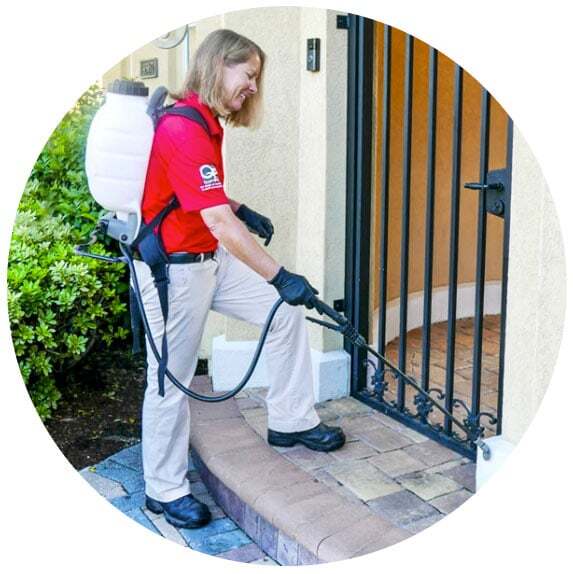We eradicate the termite colony you have now and prevent new infestations.
The good news is that we’ll list fewer varieties of termites. The bad? They can be really destructive menaces.
Termites are a menace to any homeowner in the state of Florida as well as many businesses. While the most common type of termite found doing damage in Florida is the Eastern Subterranean Termite, other species of termites can be found here as well. And it’s important to keep in mind that once you spot any type of termite, a termite colony is always nearby.
The drywood termite tends to nest in old trees, but also infest house beams and roofs. The formosan subterranean termite, meanwhile, can cause tremendous property damage, leading to significant repair costs. Here’s one more species: the nasute termite. This invasive pest will forage in the open, protected by soldiers that will squirt fluid at attackers.

HABITAT/WOOD PREFERENCE
These termites can live above and below ground, providing there is sufficient moisture.
BIOLOGY AND BEHAVIOR
A mature colony can range from 20,000 workers to as high as 5 million workers and the queen of the colony lays 5,000 to 10,000 eggs per year to add to this total. Swarming typically occurs during the day from late January through April in North Florida, depending upon temperature and environmental conditions.
DISTRIBUTION
Eastern United States

HABITAT/WOOD PREFERENCE
Being the termites xylophagous, their colonies usually live in the roots or trunks of old trees, digging tunnels and feeding on wood, behavior that can cause the death of infested trees. They also infest beams and roofs of the houses, libraries and archives, producing serious damages.
BIOLOGY AND BEHAVIOR
The nuptial flight of males and females, both fertile and winged, takes place preferably overnight on the middle of July until October, when they swarm to form new colonies. After mating they get rid of wings and build a new colony, composed by “the royal couple” (King and Queen) and by approximately 1000-2000 individuals.
DISTRIBUTION
Southeastern United States

HABITAT/WOOD PREFERENCE
Formosan subterranean termites infest a wide variety of structures (including boats and high-rise condominiums) and can damage trees. In the United States, they are responsible for tremendous damage to property resulting in large treatment and repair costs.
BIOLOGY AND BEHAVIOR
These termites construct nests made of “carton.” They also swarm in the evening, usually after sunset. The diet of the subterranean termite consists of anything that contains wood fiber (homes, building, live trees), crops, and plants.
DISTRIBUTION
Scattered in the southeastern United States, especially in Louisiana and southern Florida, and they are also found in Hawaii

HABITAT/WOOD PREFERENCE
They nest on the ground or in trees. They attack wood debris, buildings and woody vegetation. They do not attack live plants.
BIOLOGY AND BEHAVIOR
An invasive species. Workers forage in the open, defended by soldiers. Soldiers secrete fluid from their heads and can squirt it at their attackers. Nest is typically dark and globular, composed of carton. Extensive dark-brown foraging tubes between nest and feeding sites. In Dania Beach, mating flights occur on June and July evenings.
DISTRIBUTION
Dania Beach, Florida, and could potentially spread as far as north Orlando and Tampa

HABITAT/WOOD PREFERENCE
The common name powderpost comes from the termite’s small fecal pellets that these termites produce. They commonly attack the wood of furniture. These are drywood termites; they infest relatively dry wood, require no ground contact, get needed moisture from the infested wood, and are found primarily in humid coastal areas.
BIOLOGY AND BEHAVIOR
Powderpost termites are non-subterranean termites; they do not live in the ground, require no soil/ground contact, and do not build mud shelter tubes. Their colonies are located in the wood they eat and are small in size when compared to other subterranean termite colonies, usually numbering several thousand individuals after 7 years. They swarm after sunset or near sunrise, from April to June.
DISTRIBUTION
In the United States, they are found in Florida, the Gulf and Atlantic coasts of the south, and Hawaii

Ready for expert pest control? Find a Turner Pest Control location near you.